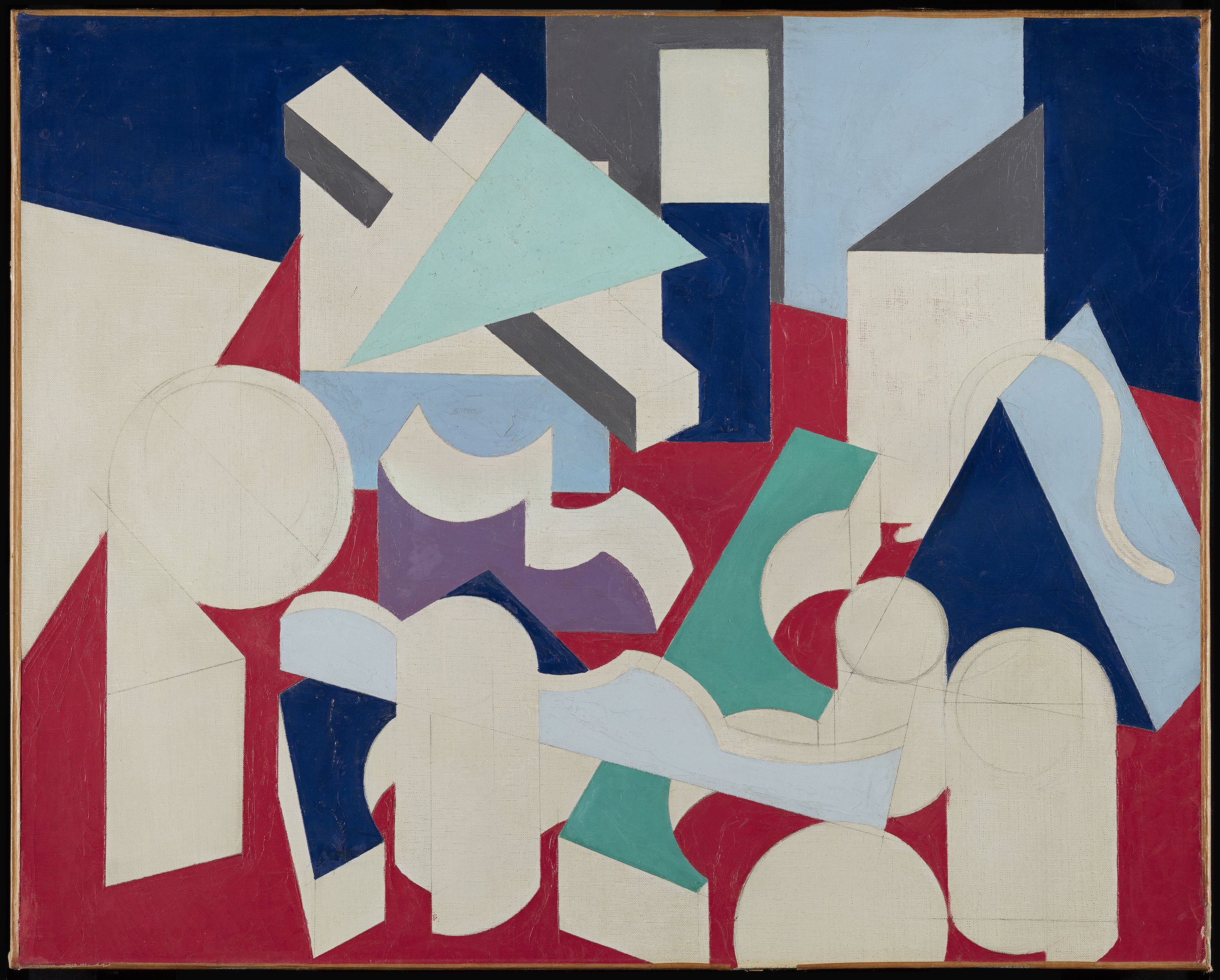Painting. Still Life
The American painter Patrick Henry Bruce resided in Paris from 1904 to 1936. There he admired the painting of Cézanne and the Cubists and studied under Matisse, in whose home he lived for a time. The colourful style of the Orphic Cubism of Robert and Sonia Delaunay exerted decisive influence on his painting. In the 1920s he produced a series of geometric still lifes entitled Peinture. Nature Morte — sometimes called Formes — to which the present work in the Museo Thyssen-Bornemisza belongs. These still lifes are striking for the unusual colours they incorporate into the Cubist language. Objects typically found in still-life scenes, such as vases and fruits, reduced to basic geometric shapes in pastel shades of green, violet and blue, stand out against the flat red and black background. The various elements are piled onto each other, in different orientations, creating an illusionary space on the two-dimensional surface of the canvas. This particular trait of Bruce’s was viewed by the authors of the catalogue raisonné of his work, William C. Agee and Barbara Rose, as “an original contribution to Cubism as well as to colour abstraction.” As can be appreciated at first glance, Bruce first draws the geometrical shapes in pencil and then fills them in with dense, flat colours, although he leaves a few areas of the canvas exposed. As Gail Levin points out, this, in addition to heightening the effect of volume, recalls Cézanne’s painting “in reserve.”
In 1932 Bruce stopped exhibiting and destroyed all the paintings in his possession, going on to commit suicide four years later, in 1936. In 1933 he gave a few paintings — among them the present work — to his French writer friend Henri-Pierre Roché (1879–1959), who frequented the company of Guillaume Apollinaire, Jean Cocteau, the Delaunays, Pablo Picasso and Picabia during the first decades of the century. Roché also acted as a dealer for artists like Max Ernst and Brancusi, and struck up a lasting friendship with Marcel Duchamp. From the outset the writer defended the work of Bruce, then an unknown artist.
Paloma Alarcó










